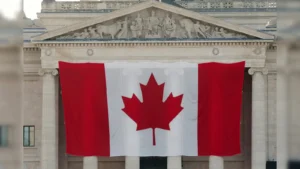As the festive week of Diwali commences, the national capital, Delhi, continues to grapple with poor air quality. On Monday morning, the overall Air Quality Index (AQI) measured 264 at 6 a.m., which, while an improvement from previous readings, still places it in the ‘very poor’ category. This level of air quality poses significant health risks, especially for vulnerable populations.
Although Monday’s AQI marked a notable drop of nearly 90 points from the previous day’s reading, it remains firmly in the ‘very poor’ zone, according to data from the IQAir website. The past few days have seen a deterioration in air quality due to stagnant winds that failed to disperse the accumulation of pollutants. In Pitampura, a neighborhood in Delhi, the AQI stood at 167, indicating a relatively better air quality compared to other parts of the city.
Areas Of Concern
Certain areas in Delhi have recorded alarming AQI levels, with Defence Colony hitting a significant 324, highlighting a concerning trend of increasing pollution. Experts warn that as Diwali celebrations ramp up across the National Capital Region (NCR), air quality is likely to deteriorate further. On Sunday, the air quality dropped into the ‘very poor’ category as calm winds allowed pollutants to concentrate, resulting in some areas experiencing ‘severe’ pollution levels. Data from the Central Pollution Control Board (CPCB) indicated that Delhi’s 24-hour average AQI reached 355 by 4 p.m., a stark increase from 255 just a day earlier.
Government Actions To Combat Pollution
In response to the worsening air quality, the Delhi government has implemented several measures aimed at improving the situation, particularly as the winter season approaches. These measures include promoting public transport and mitigating dust pollution, alongside a stringent ban on firecrackers during the festival season.
To address air quality concerns, the Commission for Air Quality Management (CAQM) activated the Centre’s emergency Graded Response Action Plan (GRAP) on October 21. Currently, Stage 2 of the GRAP is in effect, applicable when the AQI falls between 301 and 400.
Firecracker Ban And Ongoing Challenges
Despite the ban on traditional firecrackers in the Delhi-NCR region, authorities continue to face challenges in enforcing this prohibition. Since 2020, only ‘green’ firecrackers, which do not contain harmful barium salts, are permitted. However, the lack of distinction between green and conventional firecrackers complicates enforcement efforts, leading to blanket bans during the winter months.
The Delhi Pollution Control Committee (DPCC) has issued an order banning the manufacturing, storage, sale, and use of all types of firecrackers within the National Capital Territory until January 1, 2025. Nonetheless, reports suggest that illegal cross-border smuggling and the availability of traditional firecrackers could exacerbate Delhi’s pollution crisis, further complicating efforts to achieve cleaner air.
MUST READ | Meet Jainam and Jivika: The Dubai Siblings Who Now Own The JioHotstar Domain






















